Science Features
September is National Preparedness Month, a time to highlight the threats posed by natural hazards and the importance for individuals and communities to be prepared.
Hurricane Isaac recently swept through the Gulf Coast, wildfires continue to ravage the west, and drought grips more than three quarters of the contiguous United States facing abnormally dry conditions. Natural hazards like these threaten lives and cause billions of dollars in damage every year throughout the nation. Sound science is essential for preparedness to natural hazards, guiding the best decisions to minimize their impacts.
USGS: Start with Science
The U.S. Geological Survey works with many partners to monitor, assess and conduct research on a wide range of natural hazards, providing policymakers and the public a needed understanding to enhance preparedness, response and resilience. USGS research includes earthquakes, volcanoes, landslides, wildfires, floods, droughts and extreme storms.
Earthquakes
Earthquakes pose a risk to more than 165 million people in 37 states. The USGS has created and provides information tools to support earthquake loss reduction, including hazard assessments, scenarios, comprehensive real-time earthquake monitoring and public preparedness handbooks.
Imagine if doctors had time to stop delicate procedures before an earthquake. And if emergency responders had a few extra moments to gear-up, airplane landings could be postponed, trains slowed, and people could move to safer locations. The USGS and its partners are helping to provide critical seconds of notification by developing a prototype Earthquake Early Warning System in the United States.
You can sign up to receive earthquake notices through the USGS Earthquake Notification System as well as USGS social media channels. Tips and suggestions for earthquake preparedness can be found on the Earthquake Country Alliance website and the USGS Prepare website. When you feel an earthquake, you can report your experience on the USGS “Did You Feel It?” website.
The Next Earthquake: Are You Ready?
Numerous states and countries will be participating in the next ShakeOut earthquake drill on Oct. 18, 2012. At 10:18 a.m., participants will “drop, cover and hold on.” This event offers citizens a chance to learn how to get better prepared and practice what to do when an earthquake happens in their community.
This is the first year an official drill is being coordinated in the Southeast United States, and you can see a full list of participating locations at the ShakeOut website. Mark your calendar and sign up your family, school, business, or organization to join as well.
Volcanoes
When the violent energy of a volcano is unleashed, the results can be catastrophic. Lava flows, debris avalanches and explosive blasts have devastated communities. Noxious volcanic gas emissions have caused widespread lung problems. Airborne ash clouds from explosive eruptions have caused millions of dollars of aircraft damage and nearly brought down passenger flights.
Fortunately, volcanoes show signs of unrest hours, weeks and months before they erupt, and the USGS National Volcano Early Warning System is designed to detect these precursors. The USGS issues warnings and alerts of potential volcanic hazards – including ash fall forecasts – to responsible emergency-management authorities and those potentially affected. See current alerts and status for volcanoes in the United States.
Preparedness is increasingly important for the growing number of people that live, work, play and travel in volcanic regions. Learn more by visiting the USGS Volcano Hazards Program website and watching a video on USGS volcano science.
Landslides
Landslides occur in all 50 states and pose a risk to every citizen. Falling rocks, mudslides and debris flows can be deadly hazards, and we are still learning more about them. To protect communities from landslide hazards, USGS science is helping answer questions such as where, when and how often landslides occur, and how fast and far they might move.
For example, USGS scientists produce maps of areas susceptible to landslides and identify what sort of rainfall conditions will lead to such events. The USGS is working with the National Weather Service on a Debris Flow Warning System to help provide forecasts and warnings to inform community and emergency managers about what areas are at imminent risk of having a debris flow or mudslide.
For more information, watch a video about USGS landslide science, and visit the USGS Landslide Hazards Program website. Scientists at the USGS are also asking the public to help them track landslides and collect a more complete catalog of events. Report your landslide experiences and sightings at the new USGS “Did You See It?” website.
Wildfires
The USGS plays an integral role in preparing for and responding to wildfires. The USGS provides tools and information before, during and after fire disasters to identify wildfire risks and reduce subsequent hazards, while providing real-time geospatial support for firefighters during the events. For example, the USGS provides fire managers with up-to-the minute maps and satellite imagery about current wildfire extent and behavior throughout the nation.
The wildfire itself is a hazard, but once the smoke clears, the danger is not over. Secondary effects of wildfires, including erosion, landslides, invasive species and changes in water quality, are often more disastrous than the fire itself. As fires are contained, USGS scientists help to assess their aftermath to guide the re-building of more resilient communities and restoration of ecosystems.
Flooding, Storms and Drought
The USGS conducts real-time monitoring of the nation’s rivers and streams, providing officials with critical information for flood warnings and drought mitigation. If you want to know whether river levels are higher or lower than normal, visit USGS WaterWatch. You can also use USGS WaterAlert to receive texts or emails when water levels at a specific streamgage exceed certain thresholds.
During floods, USGS scientists measure water levels, river velocities and high water marks. The USGS and the National Weather Service work together to make flood inundation maps that show you exactly where the water will be – what yards, roads and buildings will be covered – and when a river or stream reaches a certain water level.
The USGS also studies coastal vulnerability and change from hurricanes and extreme storms, helping inform flood forecasts and evacuation warnings. Before, during and after major hurricanes or tropical storms affecting the United States, the USGS assesses the likelihood of beach erosion, overwash or inundation. Scientists also measure storm surge and monitor water levels of inland rivers and streams.
Unlike flooding, droughts often take a long time to begin to impact an area, sometimes festering for months or even years. USGS science contributes to the national Drought Monitor, which is the official report detailing drought conditions, as well as the National Weather Service’s Drought Outlook, which forecasts future drought.
More Information

Flooding hit record highs in in North Dakota and many other areas of the U.S. in 2011. For more on the floods of 2011: http://gallery.usgs.gov/videos/439
To learn more about National Preparedness Month, visit www.fema.gov/ or www.ready.gov.

Are you prepared for future earthquakes? Sign up and participate in a worldwide earthquake drill. Read more

Critically endangered birds whose numbers grew rapidly after successful translocations by USGS and USFWS biologists likely took a hit from the 2011 event. Read more

While Hurricane Isaac has passed, scientific work to understand the storm’s impact on Gulf Coast states continues. Read more

A magnitude 7.6 earthquake struck near the west coast of Costa Rica on September 5, 2012 at 14:42:10 UTC. Read more
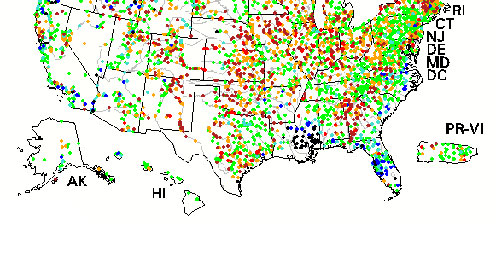
Real-time map showing the extent of flooding (black dots) and drought (red dots) in the U.S. Read more

USGS scientists, engineers, and technicians are working along the Gulf coast in response to Hurricane Isaac. Read more

USGS scientists are providing up-to-date information. Read more

The U.S. Geological Survey is keeping careful watch as Tropical Storm Isaac continues to track northwest toward the west coast of Florida and the Gulf of Mexico. Read more
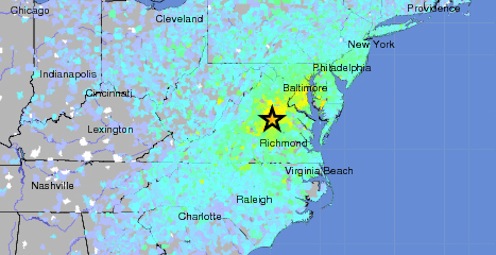
It was one of the largest recorded earthquakes to occur in the east over the last century. Find out what scientists have learned in the past year. Read more

USGS scientists improve systems to monitor and forecast volcanic activity and track volcanic ash to help communities prepare. Read more

These 3 young scientists have forged ahead with innovative research at the frontiers of science. Learn more

The majority of the nation is facing dry conditions; in most areas drought conditions are expected to persist or intensify. Read more

The new “Did You See It?” website collects citizen observations of landslides. Read more

Please comment on the USGS’ draft science strategies! Read more
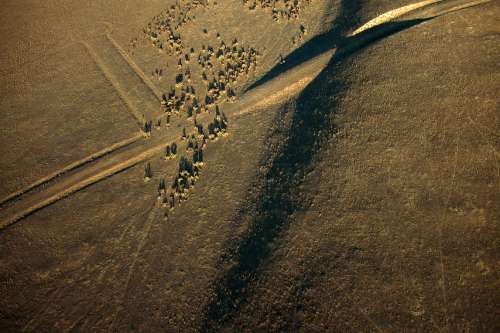
Citizen volunteers, portable instruments, and real-time maps help improve gathering of and access to earthquake data.Read more
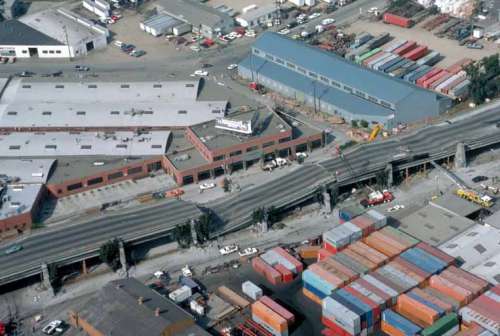
The USGS and partners are designing an earthquake early warning system for California to help save lives and property.

Science or Soundbite? Is the recent increase in midcontinent earthquakes natural or man-made? Find out here.
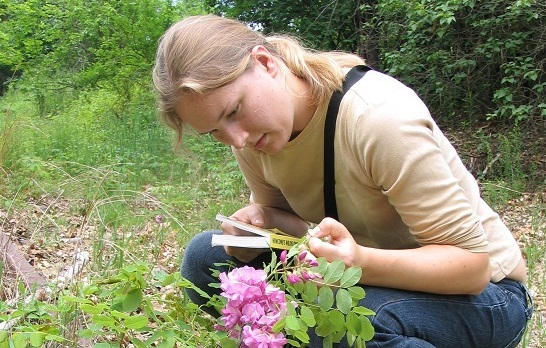
Timing is everything! Consider helping track changes in spring’s arrival

A magnitude-8.6 earthquake struck off the west coast of northern Sumatra Wednesday, April 11, 2012, at 8:38 a.m., UTC at the epicenter.

A magnitude-7.4 earthquake struck in the Mexican state of Oaxaca Tuesday, March 20, 2012, at 12:02 p.m., local time at the epicenter.

Flood Safety Awareness Week is March. 12-16. What can you do to prepare?

National Groundwater Awareness Week is Mar. 11-17, 2012. See how USGS science is connecting groundwater and surface water.

Since Japan’s March 11, 2011, Tohoku earthquake and subsequent tsunami, scientists at the USGS have learned much to help better prepare for a large earthquake in the United States.

Five USGS employees honored with Distinguished Service Awards for their service to the nation

The proposed USGS budget reflects research priorities to respond to nationally relevant issues, including water quantity and quality, ecosystem restoration, hydraulic fracturing, natural disasters such as floods and earthquakes, and support for the National Ocean Policy, and has a large R&D component.
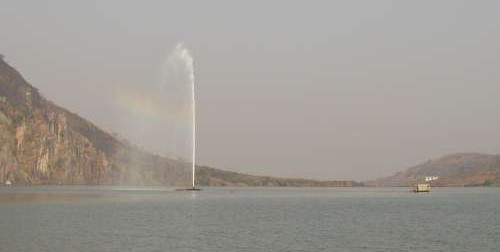
Exploding lakes in Cameroon, Africa, have killed people and livestock. Find out how USGS science is helping prevent such an event from occurring again.

Everyone is familiar with weather systems on earth like rain, wind and snow. But space weather – variable conditions in the space surrounding Earth – has important consequences for our lives inside Earth’s atmosphere.

Scientists and communities are working together to make science more useful and communities safer. What one emergency manager has to say.

Modern volcano monitoring in the United States began with the founding of the Hawaiian Volcano Observatory in 1912. Living with volcanoes

Shaking from Oklahoma's M5.6 main shock, the largest quake in the State's history, was felt from St. Louis to Lubbock. Number of quakes increasing in Oklahoma

A magnitude-7.2 earthquake struck eastern Turkey on Sunday, October 23, 2011. History of strong earthquakes
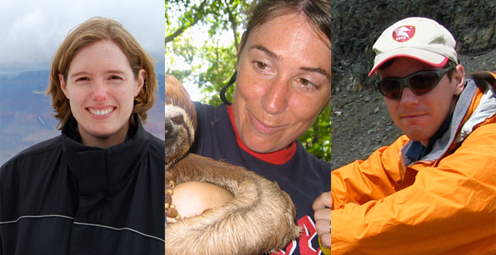
It's only the beginning of their careers, but these 3 young scientists have forged ahead with innovative research at the frontiers of science. How they've transformed their fields

Oct. 9-15, 2011, is Earth Science Week, themed "Our-Ever Changing Earth," and Oct. 12, 2011, is International Day for Natural Disaster Reduction. Answers to questions posed by a changing world

Fire managers and the public can access online maps of current wildfire locations, thanks to a Web-based mapping application provided by the USGS and its partners.

On Feb. 7, 1812, at about 3 a.m., a third, and probably most widely felt of three major earthquakes, occurred in the central Mississippi River Valley. Similar risk today.

Rivers and streams are reaching record levels as a result of Hurricane Irene’s rainfall, with more than 80 USGS streamgages measuring record peaks.

Tuesday, August 23, 2011 at 01:51 PM a 5.8 Earthquake occurred 38 miles outside of Richmond, VA.
A new geologic map of Lassen Volcanic National Park and vicinity has been created. The map area includes the entire Lassen Volcanic Center, parts of three older volcanic centers, and the products of regional volcanism.
To better understand and reduce tsunami hazards, USGS scientists examined sediment deposited by the tsunami in and around Sendai, Japan, as part of an international tsunami survey team organized by Japanese scientific cooperators.
USGS crews continue to measure streamflow and collect water quality and sediment samples in the Ohio and Mississippi River basins using state-of-art instruments.
Many communities in South Dakota, North Dakota, Montana, Colorado, Wyoming and Iowa are dealing with record floodwaters and bracing for more flooding in the upcoming weeks.
Fire managers and the public can access online maps of current wildfire locations, thanks to a web-based mapping application provided by the USGS and its partners.
New Zealand has experienced another damaging earthquake close to the city of Christchurch, which is still recovering from the magnitude-6.1 earthquake that struck in February. This latest quake has resulted in additional damage to buildings and infrastructure.
The USGS-NASA Landsat 5 satellite captured this image of 39-mile track of destruction caused by a massive tornado on June 1 near Sturbridge, MA.
As hurricane season starts, researchers are modeling potential changes to coastal environments to identify communities vulnerable to extreme erosion during storms. Data collected before and after storm landfall are used to verify past forecasts and improve future predictions.
The effects of the March 11 magnitude 9.0 earthquake and resulting tsunami on Japan are being monitored using Landsat satellite data from the USGS.

The most recent earthquake in Japan affected water levels in groundwater wells all over the country. Water level fluctuations were recorded as far away as Illinois, Virginia, Missouri and Florida.

Volcanic activity continues in the Pu`u `O`o crater on Kilauea Volcano's east rift zone and in the Halema`uma`u Crater vent at Kilauea’s summit. Visit the USGS Hawaii Volcanoes Observatory site to get detailed Kilauea and Mauna Loa activity updates, recent volcano photos, recent earthquakes, and more.
Scientists unveil a catastrophic winter storm scenario that could possibly overwhelm California's flood protection system, and significantly disrupt Statewide social and economic systems.
Heavy rainfall could potentially destabilize hillsides. The USGS Landslide Hazards Web site has what you need to know if you live in an area prone to landslides.
The USGS and the National Weather Service have developed a new flood inundation map tool that enables management officials and residents to see where the potential threat of flooding is the highest along the Flint River near Albany, Georgia.

Volcanic eruptions have always been a part of human history; the American experience is no exception. On November 3rd, USGS’s Dr. John Eichelberger discusses new USGS programs which establish monitoring networks on all hazardous US volcanoes, to reduce the effects of volcanic hazards on communities.
Kilauea is Hawaii's youngest volcano and one of the world's most active. Get daily updates on ongoing eruptions from Kilauea's summit and east rift zone.
Looking for information on natural resources, natural hazards, geospatial data, and more? The USGS Education site provides great resources, including lessons, data, maps, and more, to support teaching, learning, K-12 education, and university-level inquiry and research.
The USGS PAGER system (Prompt Assessment of Global Earthquakes for Response) will now include estimated economic loss and casualty information. This system is used by emergency responders, government and aid officials, and the public to understand the scope of the disaster to develop the best response.
Flash flooding is one of the major causes of natural hazard-related deaths in the United States and is hard to predict, but data collected by the USGS is crucial to formulating better predictive models.
The USGS Science Strategy is a comprehensive report to critically examine the USGS's major science goals and priorities for the coming decade. The USGS is moving forward with these strategic science directions in response to the challenges that our Nation's future faces and for the stewards of our Federal lands.

In response to Hurricane Isaac, USGS has deployed several hundred storm surge sensors to collect information about the effects of Isaac on the Gulf Coast.

Join us on September 5th in Reston, VA for a free public lecture on the 2011 Virginia earthquake!
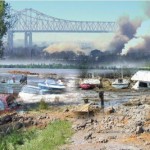
Join us on August 1 to learn more about the anatomy of flooding: What are the different causes of these extreme events, and how is USGS science helping prepare residents for future foods.

Join us on June 6 for a centennial look at the greatest volcanic eruption of the 20th century at our June Public Lecture!

In recognition of World Forestry Day, let’s take a glimpse at USGS science to understand the fate of forests from climate change.

The Volcano Hazards Program announces the establishment of the USGS California Volcano Observatory (CalVO), which expands and replaces the former Long Valley Observatory.
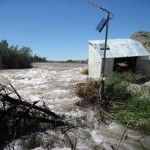
The U.S. Geological Survey had a very busy 2011 — below are a few of our highlights from last year.

On Nov. 3, USGS scientists Patrick Barnard and William Ellsworth will present a public lecture in Menlo Park, CA, providing Bay Area residents information about USGS research in the San Francisco Bay Area, including recent discoveries beneath San Francisco Bay and ongoing studies to better understand earthquake probabilities and the potential hazards associated with strong ground shaking.

Join USGS scientists on November 2nd to discuss the seismology of the M5.8 Virginia earthquake, its effects, and its context in the geology of Virginia.
Accessibility FOIA Privacy Policies and Notices

![]() U.S. Department of the Interior |
U.S. Geological Survey
U.S. Department of the Interior |
U.S. Geological Survey
URL: www.usgs.gov/blogs/features/usgs_top_story/september-is-national-preparedness-month/
Page Contact Information: Ask USGS
Page Last Modified: September 14, 2011
 Loading Page...
Loading Page...



